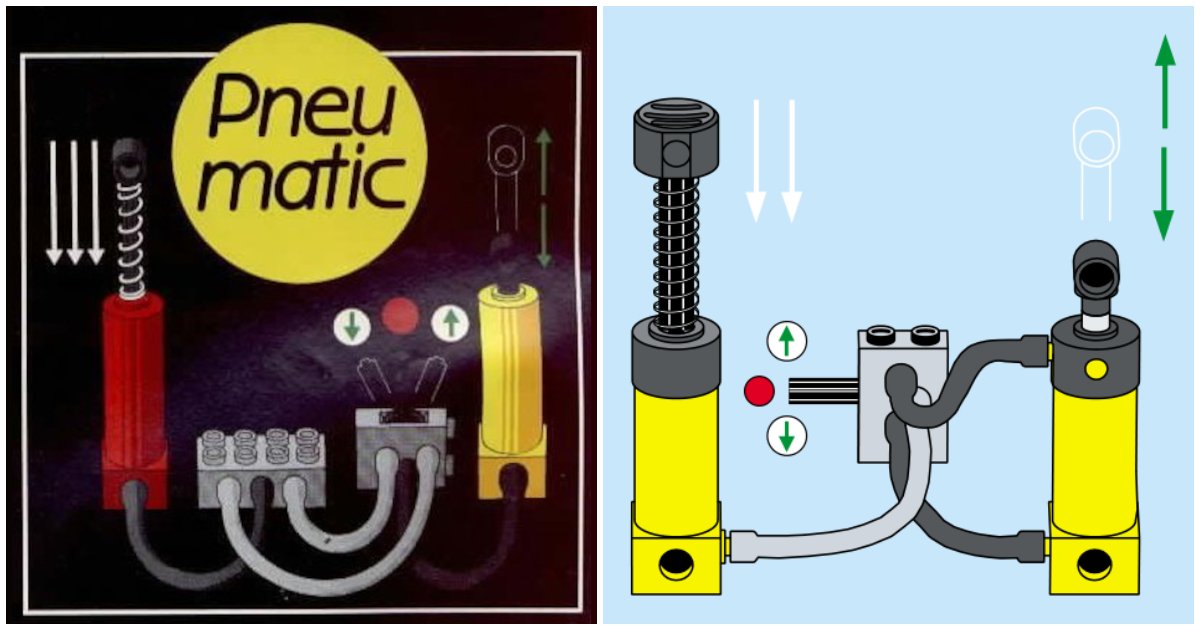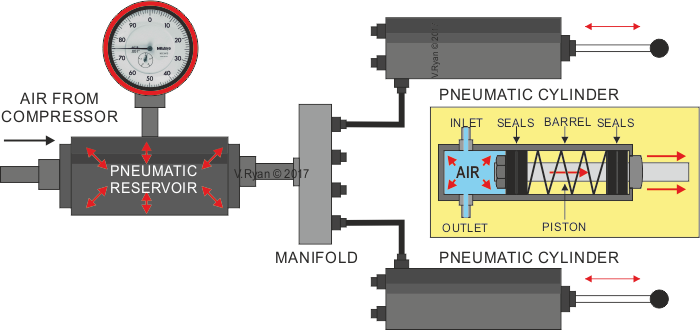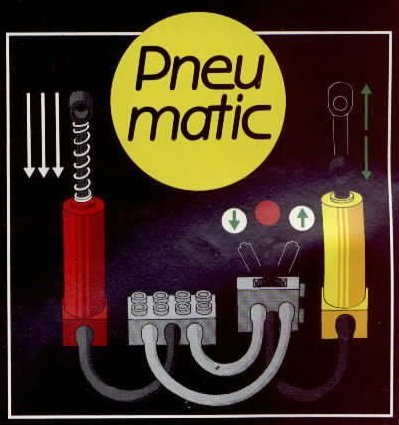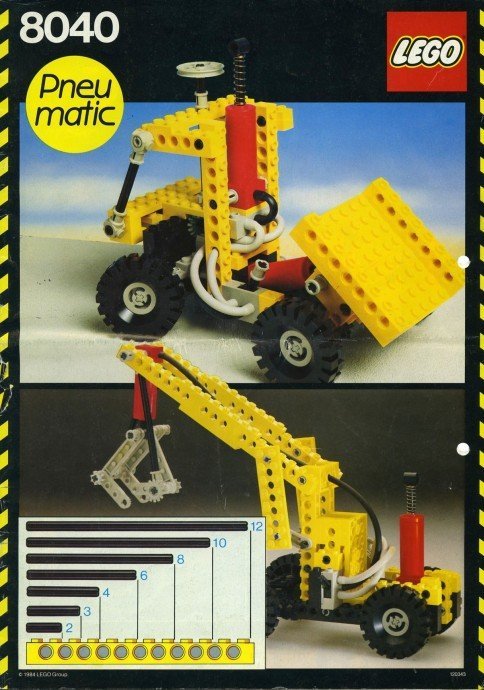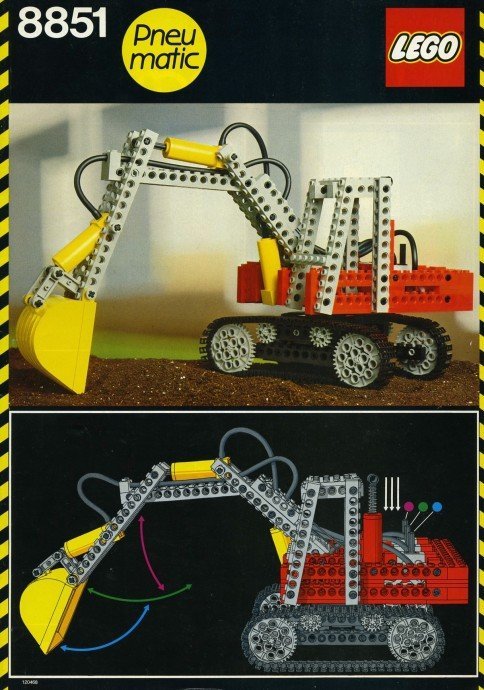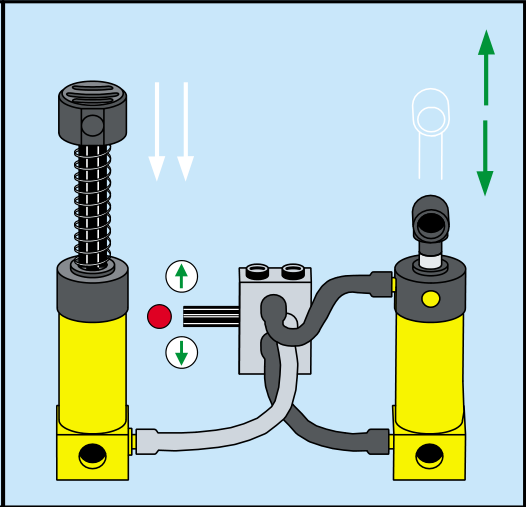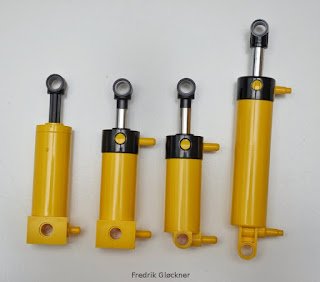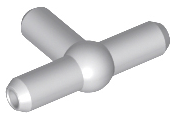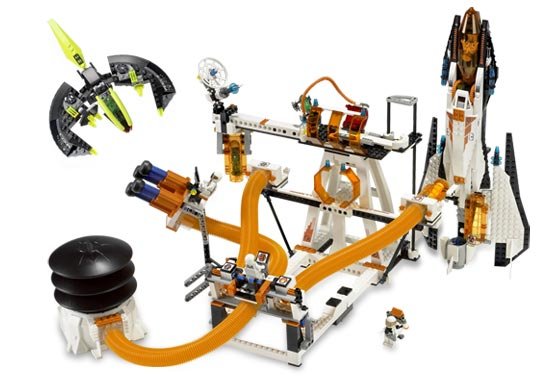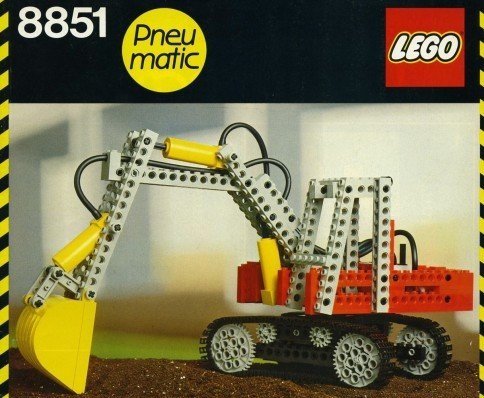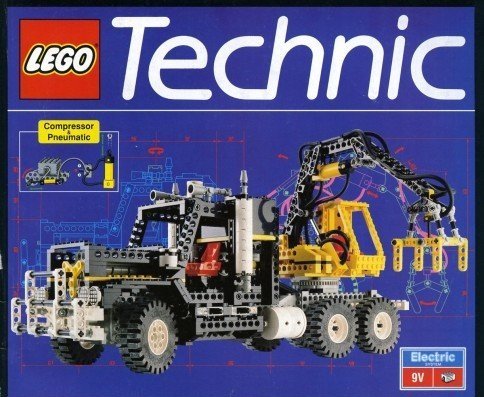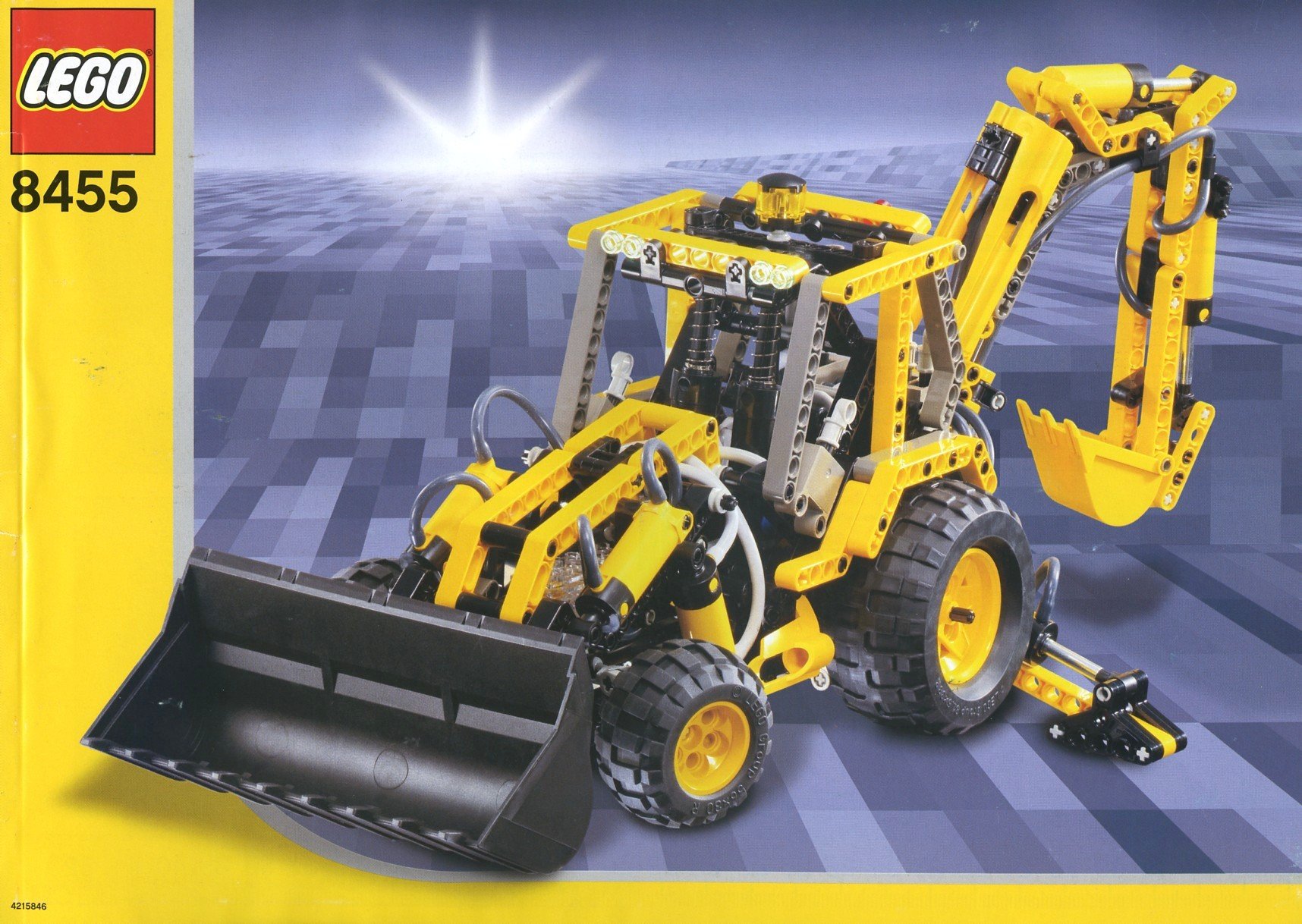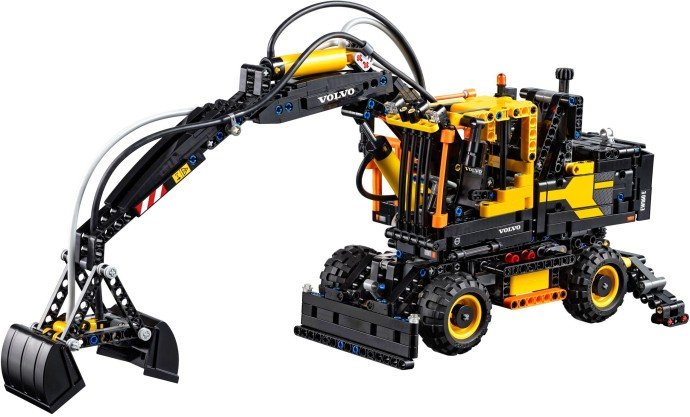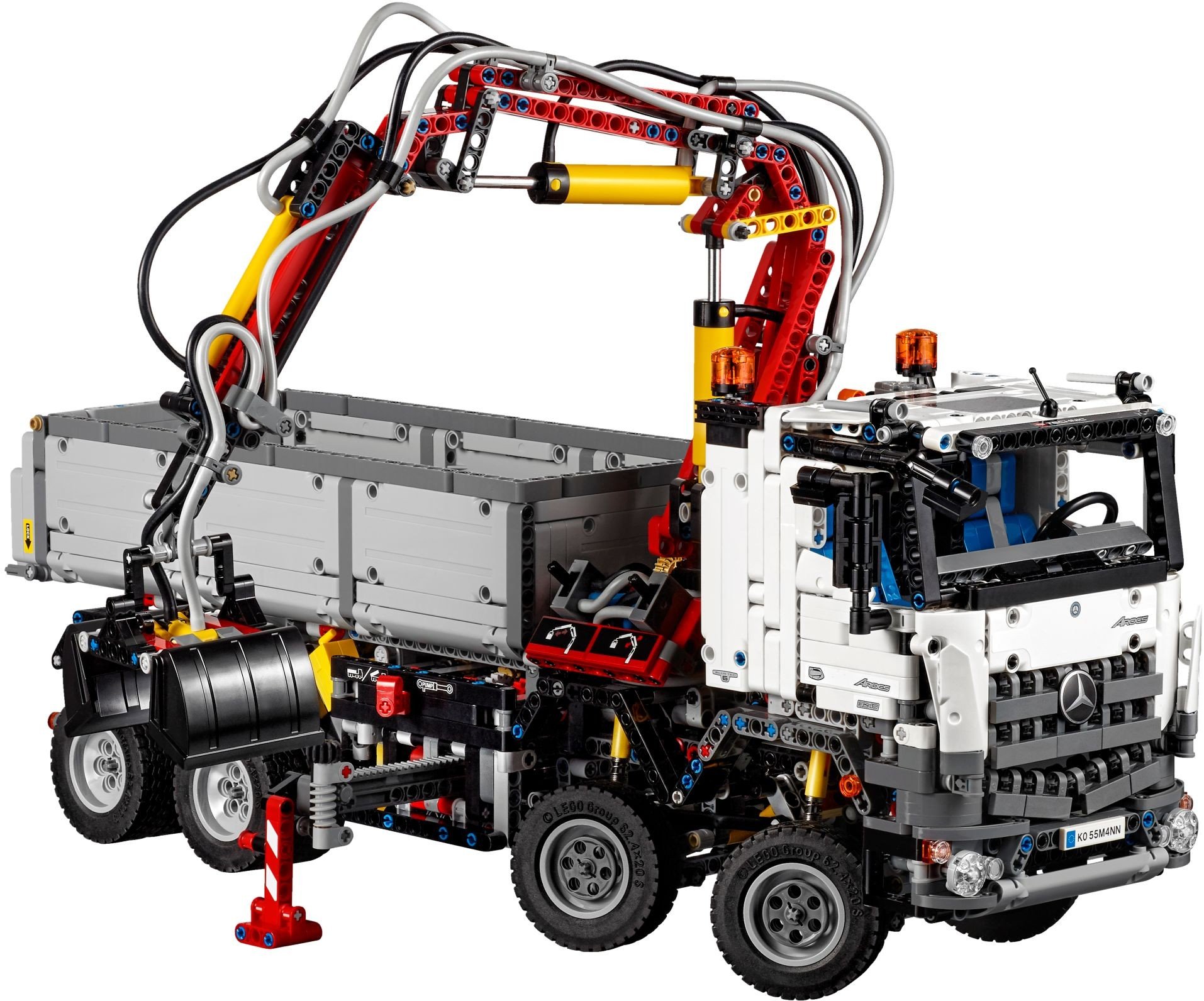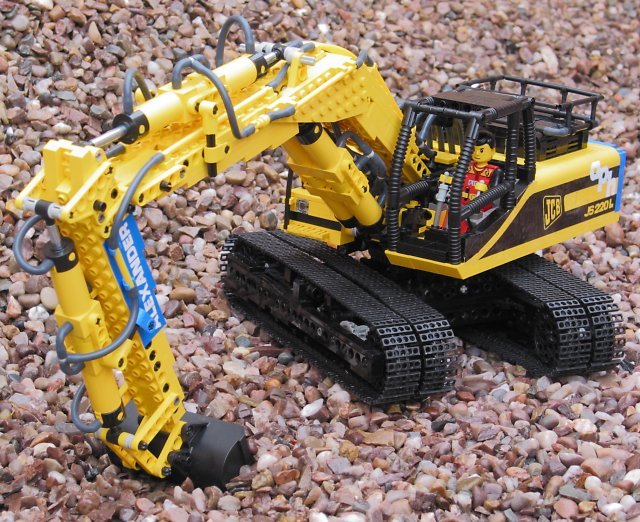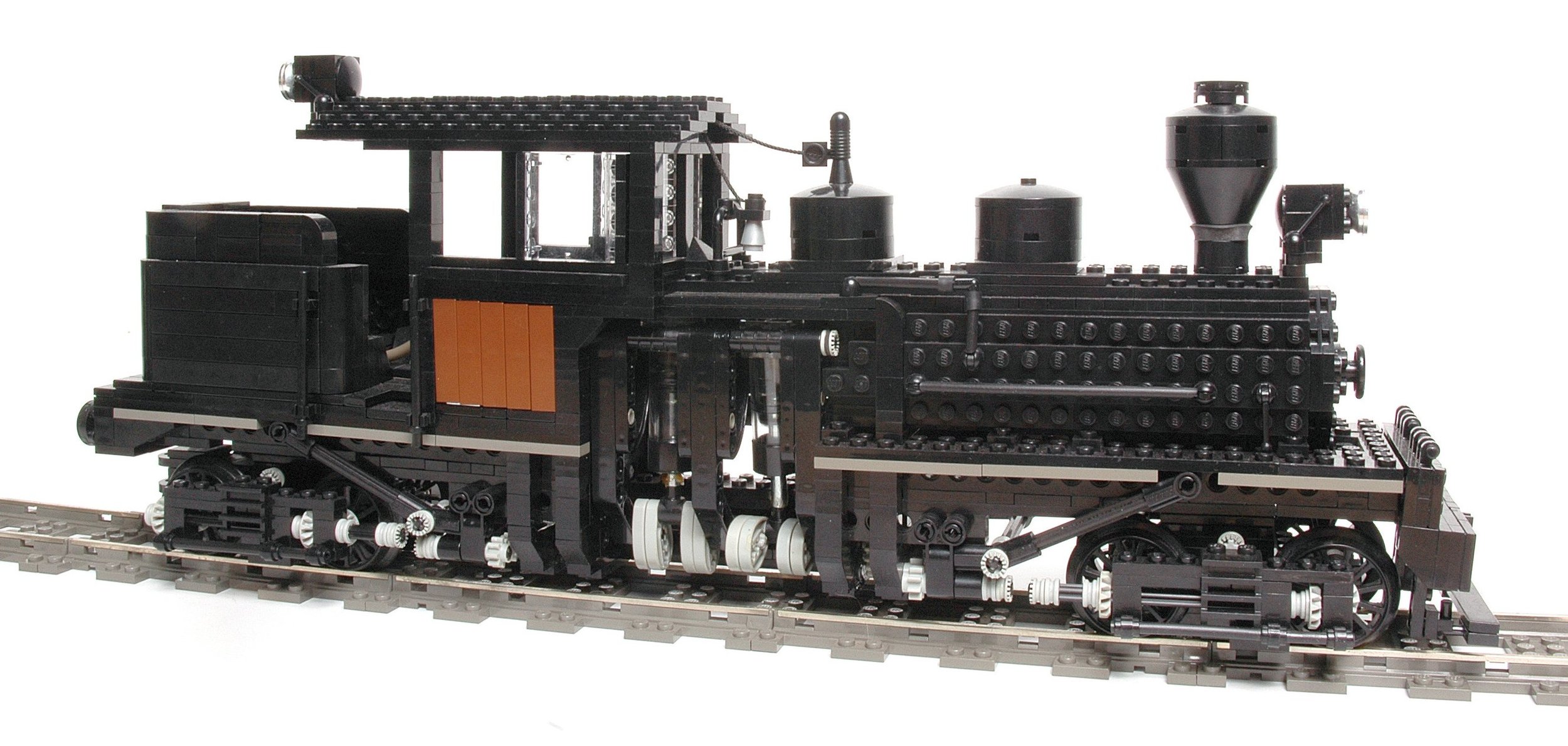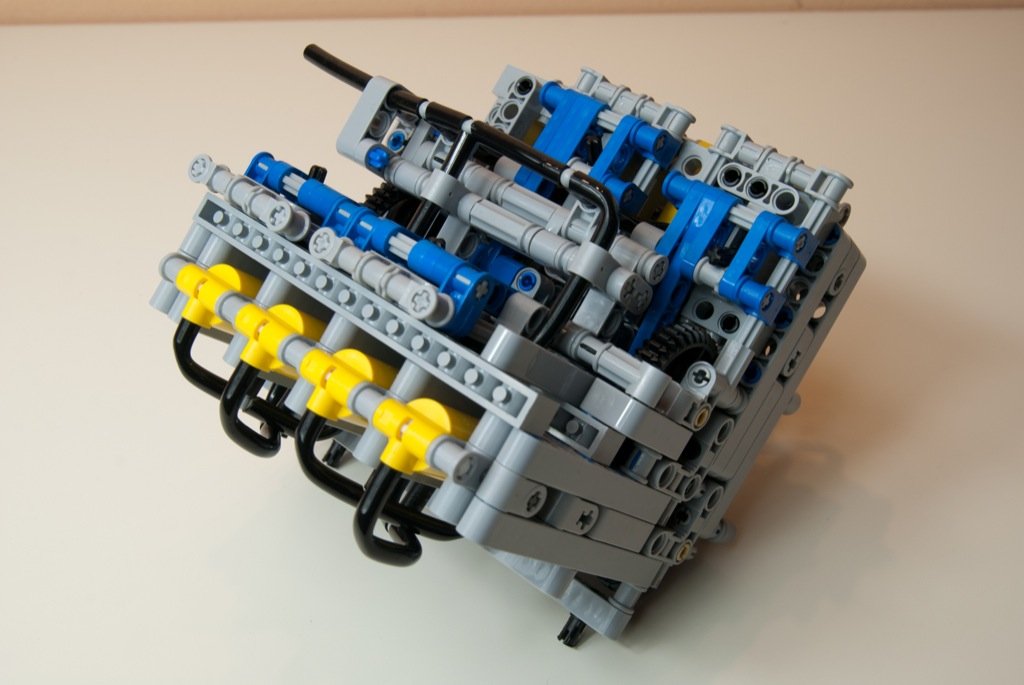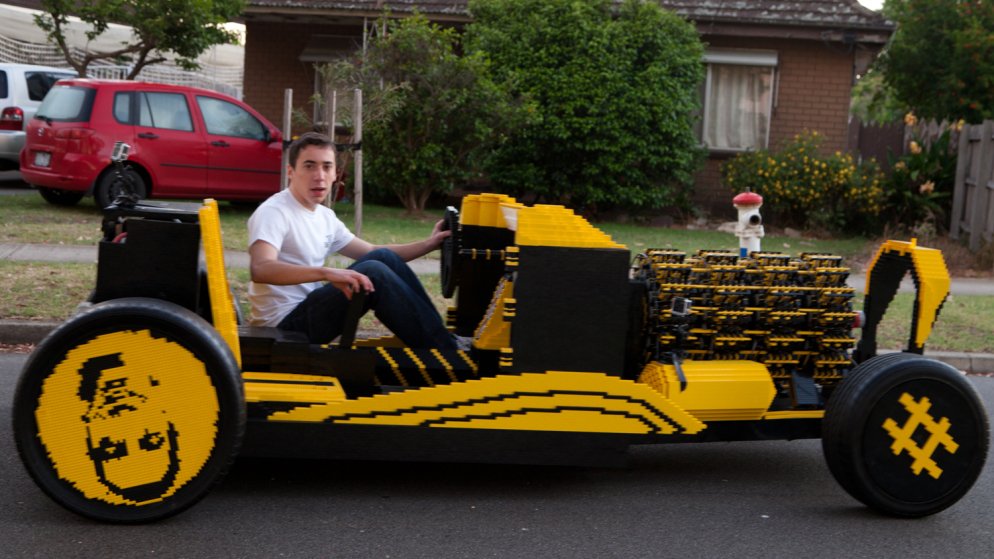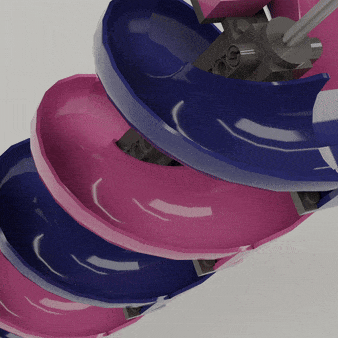Everything You Want To Know About LEGO Pneumatics
/Pneumatic sets have been part of the LEGO Technic theme for a long time; the first sets were introduced in 1984 only two years after the Technic name was introduced. There haven't been many pneumatic sets though—if you don't count re-releases, accessory packs and LEGO Education, only 28 sets have been released in 39 years, with a 29th (42157 John Deere 948L II Skidder) just announced for later this year. Despite this rarity, pneumatic sets remain popular.
So let's have a closer look at LEGO pneumatics. Along the way, we'll look at the history of the system, the components, the science, LEGO sets and MOCs. So let's get going, we have a lot to get through.
It’s All Greek To Me
The word 'pneumatic' comes from the Latin word 'pneumaticus' which in turn comes from the Greek word 'pneumatikós' meaning air, breath or spirit. The dictionary calls it “containing or operated by air or gas under pressure”. Pneumatic power is clean and fast and easily available from a compressor. You'll find pneumatic jackhammers and impact wrenches, suspension and brakes. You may never have realised but a lot of your dentist's tools run on air pressure.
Basic pneumatics via Technology Student.
Pneumatics has a cousin, hydraulics. Another word with a Greek/Latin origin, this one comes from 'hudor' meaning water and represents another technology using fluids to transfer power, usually oil. Hydraulics has some advantages over pneumatics because liquids don't compress like gases. That means it is more precise and has more force. That's why you’ll find hydraulics used in all sorts of heavy machinery like diggers, loaders, cranes and tow trucks. On the flip side, hydraulics is messy and more expensive.
Because they are so similar, pneumatics can be used to model hydraulics, and that's exactly what LEGO decided to do when they wanted to create more realistic heavy machinery. For LEGO models the force and precision are not that important, but the cost and ease of use are.
With that bit of theory out of the way, let's go back in time to the start of LEGO Technic.
In The Beginning…
Technic was introduced in 1977 with four sets (well, four models anyway—there was also a motor set and a supplementary set). Two more sets were released in 1978 before a rapid expansion of the Technic parts palette started. 1979 introduced chains and treads, 1980 added shock absorbers, a differential and the 16 teeth gear, 1981 medium tyres, toggle joints and steering arms. Then things slowed down a bit; 1982 only added friction pins and 1983 the 3L axle.
In 1984 came the biggest innovation yet and the subject of this article: Pneumatic elements. The first wave introduced all the core parts of the system: a pump to create pressure, a valve block and a switch to control the pressure, and work cylinders to use the pressure.
LEGO Pneumatic System version 1
It was a clever system, with a special distribution block at its heart. It has two one-way valves, so with the pump connected in the middle, it will blow air on one side, and suck air on the other side. If you connect each side of the valve block to one side of a switch, you can choose whether the middle port on the switch is blowing or sucking air. Connect this port to a cylinder and you can now control the cylinder with the switch. All this is shown in the diagram below; you push the red pump, move the switch left or right and the rod in the cylinder goes up or down.
The flagship set of that year, 8851 Excavator, was a very impressive machine with a much more realistic mechanism than 856 Bulldozer that was released a few years before but had to make do with gear racks. One more pneumatic set (8680 Arctic Base) was released in 1986 before LEGO realised improvements were required.
Here Comes The Science Bit - Concentrate!
See, there was a pretty fundamental problem with this early system and to explain it I need to put on my physics teacher hat. What LEGO had developed was a system with single-acting pneumatic cylinders. That means the compressed air from the pump only works on one side of the work cylinders. Here's what that looks like:
Single-Acting pneumatic cylinder pushing
Blue is the air from the pump. When it's pushed in through the port at the base of the cylinder to the left chamber it pushes the piston to the right and this forces the air from the right chamber out of the cylinder past the rod.
The harder you pump, the higher the pressure of the air in the left chamber, the harder the piston (and the rod with the pin hole) are pushed out. So far so good.
Single-Acting pneumatic cylinder pulling
Now, what if we want to go the other way? Thanks to the distribution block with its one-way valves, the pump now sucks the air out of the left chamber. Air from outside comes into the right chamber, pushing the piston in.
The problem is, no matter how hard you pump, the air pushing the piston in will never have more than atmospheric pressure, the pressure of the air in the room. That means the cyclinder can never pull with more than that atmospheric pressure.
The solution was to change to double-acting cylinders. What does that mean?
Double-Acting pneumatic cylinder pushing
Not a lot changes on the push action. The air from the pump still comes into the left chamber and air from the right chamber is pushed out. The only difference is that now the air is pushed out through a second port on the cylinder rather than past the rod.
The big difference is on the pull action.
Double-Acting pneumatic cylinder pulling
Instead of sucking the air out of the left chamber the pump is now pushing air into the right chamber, forcing air out of the left chamber through the port. Now the harder you pump, the higher the pressure in the right chamber and the higher the pulling power of the cylinder.
Ok, I'll take off the physics teacher's hat to go back and look at the components of pneumatics V2.
LEGO Pneumatic system version 2
The pump was new, and not just in appearance. The first pump could generate a vacuum but the new pump had a one-way valve and could only push air out through its port. The distribution block was no longer needed because there was no longer a need to suck air out of cylinders. The switch remained unchanged but as mentioned above the cylinders changed. They gained a second port and they were upgraded from plastic rods to metal.
As you can see in the diagram, the new system was much simpler.
Putting The New System To Work
Pneumatics V2 was introduced in 1989 with three sets; a universal set, a crane and a backhoe loader—both models that would return in the pneumatics range. Three years later two new parts were introduced, a small cylinder and a small pump. The small pump has no spring like the bigger ones. It is meant to be driven by a motor, and that’s exactly what happened in that year’s flagship Technic set. 8868 Air Tech Claw Rig is a legendary set, the first pneumatic set to have an onboard compressor. Technicopedia has an excellent article about it worth reading.
8868 Air Tech Claw Rig - Image from Technicopedia
The next innovation was the air tank. A blue cylinder with an in and out connection, this simply worked as a buffer to store compressed air. It worked really well and provided much smoother operation. It was used in two sets in 1997 and then one more in 1998. Strangely, after that it has only appeared in two re-issues of one of the '97 sets and in white in a Dacta set. Because of these low production volumes, this is now an expensive part; expect to pay €20/$20 for a used one. That same Dacta set contained another now expensive part: a Manometer that only appeared in that one short-lived set.
Evolution of LEGO pneumatic cylinders via Fredrick Gløckner’s LEGO Technique blog
Meanwhile Technic had started to move towards a studless design language so slowly the studs were removed from the pneumatic parts. The small pump and cylinder were always studless but in 2003 the switch and medium cylinder were replaced with studless versions, and in 2016 we finally received a studless large pump. In 2011, the small pump was made slightly longer to better fit with the studless system and in 2015 two longer cylinders were introduced. The table below shows the production life of various pneumatic parts. The numbers are the number of sets each year that the part appeared in.
Most pneumatic parts are very specific and can't really be used for anything else, but there are two parts that were developed for the pneumatic system but have been used in hundreds of other sets.
The first is the humble T-piece. It was developed as a splitter for connecting two cylinders to one switch, but the ability to clip anything onto it has made it a versatile part that's been used in all sorts of sets and MOCs. One of the first sets outside Technic to use it was the mighty 5571 Black Cat Truck. In 2011 its cousin was born, the hose connector with axle connector, and that too has proven versatile and popular.
But Wait, There’s More Than Technic
So far we have looked at Technic but there are actually two other LEGO pneumatic systems. Back in 2001, we had a short-lived theme 'Life on Mars'. Its flagship set, 7317 Aero Tube Hanger, had a pneumatic system with tubes that could transport martians in tiny vessels. It was a bit like the internal post systems you used have in banks or department stores that suck containers through tubes.
7690 MB-01 Eagle Command Base - Image from Brickset
That set, and specifically the tube system, also gave us the 2x8 door slider plate. The system made a comeback in 2007 with Mars Mission where it was also used to shoot nerf-like darts. Jang Bricks has a great video that demonstrates all this.
More recent (and slightly less exciting) is the fake water that was used in two City sets in 2019 and has not been seen since. There's a rubber bladder you can squeeze and when you do a ray of water/ transparent blue tube extends from the barrel. The extending tube can be used to knock over flames.
60214 Burger Bar Fire Rescue - Image from Brickset
One of those two sets shows that the bladder, with the help of an adapter piece, is physically compatible with the Technic pneumatic system. A regular pneumatic hose is used to connect the bladder at the base of the ladder to the water tube part at the other end. This compatibility has not yet been used. Given how different the characteristics of the bladder and the pneumatic pump are, I don’t think it ever will, but you never know. LEGO set designers are creative people…
Pneumatic Hall of Fame - Sets
There are a few pneumatic sets I want to highlight. Some have already had brief mention earlier but deserve some more attention.
8851 Excavator, the first pneumatic flagship set (1984)
Compared to today's sets this may look a bit crude and simple but you have to put it into perspective. The proportions are pretty good and the articulation of the boom is spot on. In its day it was a fantastic set. This set also introduced the threaded Technic axle.
8868 Airtech Claw Rig, the first onboard compressor (1992)
A tough looking truck, with a V6 engine, a motor inside running a compressor and a fully pneumatic-controlled crane on the back. This set raised the bar for flagship sets and remained a fan favourite for a long time.
8455 Backhoe, full of functions (2003)
The previous pneumatic backhoe loader only used pneumatics at the back, but this one went all out. The front bucket, backhoe and outriggers were all operated with no fewer than 7 switches and 10 cylinders. No set before or since has come close. The only way to improve this set would be adding an air tank.
42053 Volvo EW160E, she's got the looks (2016)
This is a fantastic set and probably my favourite Pneumatic set. It just has it all; full of functions, pneumatic and otherwise, and lots of great parts. It has just enough detailing to look great but still looks like a Technic set. On top of that, you can add a battery box and motor to give it an on-board compressor. And all of that at a compact size that meant it was affordable.
42043 Mercedes-Benz Arocs 3245, the biggest (2015)
The largest Technic set when it was released, it's now only 8th largest... This set does so much more than pneumatics. Thanks to a gearbox the motor that runs the compressor can also extend the outriggers, tip the bed or turn the crane. On top of that it has full suspension and 4-wheel steering.
Pneumatic Hall of Fame - Builders
I'd also like to highlight some LEGO builders who have done great things with pneumatics. The first one is Jennifer Clark. She was only around as an AFOL (Adult Fan of LEGO) for a few years before her music career took over, but in those few years she created some impressive MOCs.
Her first pneumatic MOC was a little skid loader which had relatively simple functions. This was followed by a compact excavator where she managed to cram an insane amount of functionality in a model that literally fits in the palm of your hand. The third and final model was a JCB JS220 where she used all the experience from the smaller excavator to do an even better job.
Jennifer Clark’s JCB JS220 - Photo from Jennifer’s website Genuinemodels.com
That JCB is a masterpiece of LEGO engineering. It has motors to drive the treads and slew the superstructure and pneumatics for boom control. Not only are the dimensions and movement range very accurate, the control is as well. For that, she built a custom remote control that connects to the model with an umbilical cord that houses the pneumatic compressor. It has joysticks that control the same functions as in a real JCB excavator. I had the pleasure of playing with this excavator at a Scale Model event where we both displayed.
Do check out her website, which doesn't just show the models, but also describes the engineering principles and the development journey behind them.
The second builder is fellow Dutchman Rene Kok. Realising that the LEGO pneumatic cylinders work exactly like those in a steam engine he created a number of American gear-driven steam locomotives. I don’t know for sure but he may well have been the first to do so. My favourite is his model of a Shay:
Shay gear-driven steam locomotive by Rene Kok - Image from Brickshelf
The usual bright yellow pneumatic cylinders would have looked out of place here so Rene has used the transparent ones from LEGO Education sets. I’ve seen (and heard!) this loco run on track, connected by an umbilical tube to a compressor and it’s a wonderful sight and sound. Check out his other models in his Brickshelf folder.
The next builder has taken the pneumatic engines to another level. Alex "NicJasno" Zorko is Mr. Pneumatic Engine. Modeling combustion engines instead of steam engines, he has put a lot of time into perfecting LEGO pneumatic engines. His videos are not for purists; he uses drills to make the ports on the cylinders bigger for better airflow and uses lubrication for better performance, but the results are incredible. He has revved his V8 over 1500rpm.
Pneumatic V8 by Alex Zorko - Image from LPEPower.com
LEGO pneumatic engines are very powerful and Alex uses that power for large Technic cars. Those models are not just impressive because of their engines, but the steering and suspension are also incredibly well-engineered. Check out his YouTube channel for some impressive videos!
The last builder is someone I know very little about, but he has built the craziest LEGO pneumatic engine MOC ever. Did I mention pneumatic engines are powerful?
Life-sized LEGO pneumatic car, built by Raul Oaida - Photo from extremetech.com
Yes, that’s a life-sized car, powered by 256 pneumatic cylinders, that can be driven at 30 kph. No doubt glue was used, but it’s mighty impressive all the same. You can see a test-run on YouTube.
The Return of Air Power
The upcoming release of the John Deere set means this is the first time since 2006 that we will have a pneumatic set in three consecutive years—it looks like pneumatic sets are as popular as ever! Of note, next year will be the 40th anniversary of LEGO Pneumatics. Will LEGO mark that milestone with a special set? Maybe a new studless air tank? Maybe a pneumatic engine set? Only time will tell…
Additionally, here are a few more technical notes. For this article, I have used the Rebrickable inventories and part numbers. In some cases they differ from BrickLink and Brickset part numbers. For example 47223a on Rebrickable is 4694bc01 on BrickLink and 33163 on Brickset.
Lastly, if you want to get started with pneumatic engines watch this video on the Brick Technology YouTube channel. Who knows what you’ll be able to accomplish with air power now!
Best of BrickNerd - Article originally published on May 12, 2023.
Have you used LEGO pneumatics in a MOC or have any fond memories of the system? Leave your thoughts in the comments below.
Do you want to help BrickNerd continue publishing articles like this one? Become a top patron like Charlie Stephens, Marc & Liz Puleo, Paige Mueller, Rob Klingberg from Brickstuff, John & Joshua Hanlon from Beyond the Brick, Megan Lum, Andy Price, John A., Lukas Kurth from StoneWars, and Wayne Tyler to show your support, get early access, exclusive swag and more.

